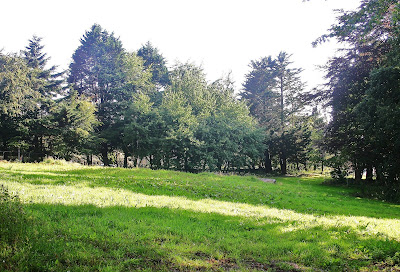New Council Offices - Green Transport or Traffic Chaos? Or Maybe Both.
 I’ve recently given credit where it’s due to the excellent green energy credentials of the new council offices due to open next month on the outskirts of Aberystwyth. Now for a more difficult issue – transport arrangements for the site.
I’ve recently given credit where it’s due to the excellent green energy credentials of the new council offices due to open next month on the outskirts of Aberystwyth. Now for a more difficult issue – transport arrangements for the site. Whilst the current council offices are dotted all around the town centre, with easy access to the town’s car parks, the new offices – Canolfan Rheidol - are the best part of a mile outside the town. 465 staff will be moving there whilst the number of car parking spaces provided is 201. I haven’t got the figures for the new Assembly building next door but I imagine they will be quite similar, thereby doubling the problem.
Of course, at any given time a number of staff will be on annual leave or working off site and many staff already walk, cycle, bus to work or car share. But even taking this into account, in a dispersed rural area where public transport to work often isn’t an option, the difference between the figures suggest a problem; especially when you consider there will be no parking places at all for visitors to the building wanting to stay more than an hour, not even for invited guests who may have travelled some distance. You don’t have to be Jeremy Clarkson to think that’s quite tough. The distance from the town’s car parks isn’t unwalkable of course – the nearest one will be about half a mile away - but it’s certainly a lot further than people are used to walking for business purposes.
Over, then, to the Council’s Highways Department who’s hour has come. When it became clear there wasn’t going to be sufficient land or money to cater for everyone who’d like to drive to the building the department were suddenly given an opportunity to put into action all the green transport strategies they’d been thinking about for the past few years. So staff moving to the new building are being presented with superb cycling facilities, new bus stops, car share schemes and a Park & Ride together with flexible working hours and opportunities to work from home. Coupled with these incentives is a blunt refusal to allow any member of staff living within the boundaries of Aberystwyth or Llanbadarn to use the building’s car park at all.
Figures from a recent survey show that council staff are already considerably better than the Ceredigion average at making green transport choices. Even so, the same survey indicates that demand for staff parking places is still likely to exceed supply.
At least staff will have been fully briefed and know what to expect. The biggest problem may well be with visitors. The number of people visiting the various council offices in town each day must number well into the hundreds and the new building is being billed as a one-stop shop for all of them. I don’t envy the car park attendants standing by a barred entrance with the task of telling visitors the nearest car park for them is half a mile away at the Park & Ride from where they can catch the next bus back. Although this kind of scenario is already happening in many places, it’s new to Aberystwyth.
Now human beings, including those who should know better, are notoriously recalcitrant when it comes to their car-related behaviour. I remember being given a lift by a fundamentalist green activist. On the journey he was full of all the familiar complaints about poor roads and slow drivers in front, until I pointed out that he was supposed to be in favour of all that. Many perfectly intelligent, community-minded people, despite the best attempts to educate them about alternatives, will always try to get their cars to as close to where they’re going as possible.
The question is, given this, where are those excluded from the building’s car park, and bull-headedly intent on finding a nearby parking spot, going to go? Residential streets near the site await the opening of the new buildings with trepidation. It could be an interesting exercise into what happens when some good principles come up against the reality of people’s transport choices, a reality that more urban councils have had to face years ago. This summer there has been just a single traffic warden for the whole of Aberystwyth due to the Council Cabinet’s stubborn refusal to take over responsibility for parking enforcement from a police force willing them to do so.
In many ways the Council’s Highways department is being very brave in attempting to confront the sheer impossibility of our society’s car expectations, even if this has been forced on them by the restrictions of the site. There's a green transport argument that says that, given people’s mesmeric attachment to their cars, the only way we will ever learn to act green is to provide no car facilities whatsoever and, only when that results in traffic chaos, will we finally learn to make environmental choices. It looks as if we may be about to see that theory put to the test in Aberystwyth.





















